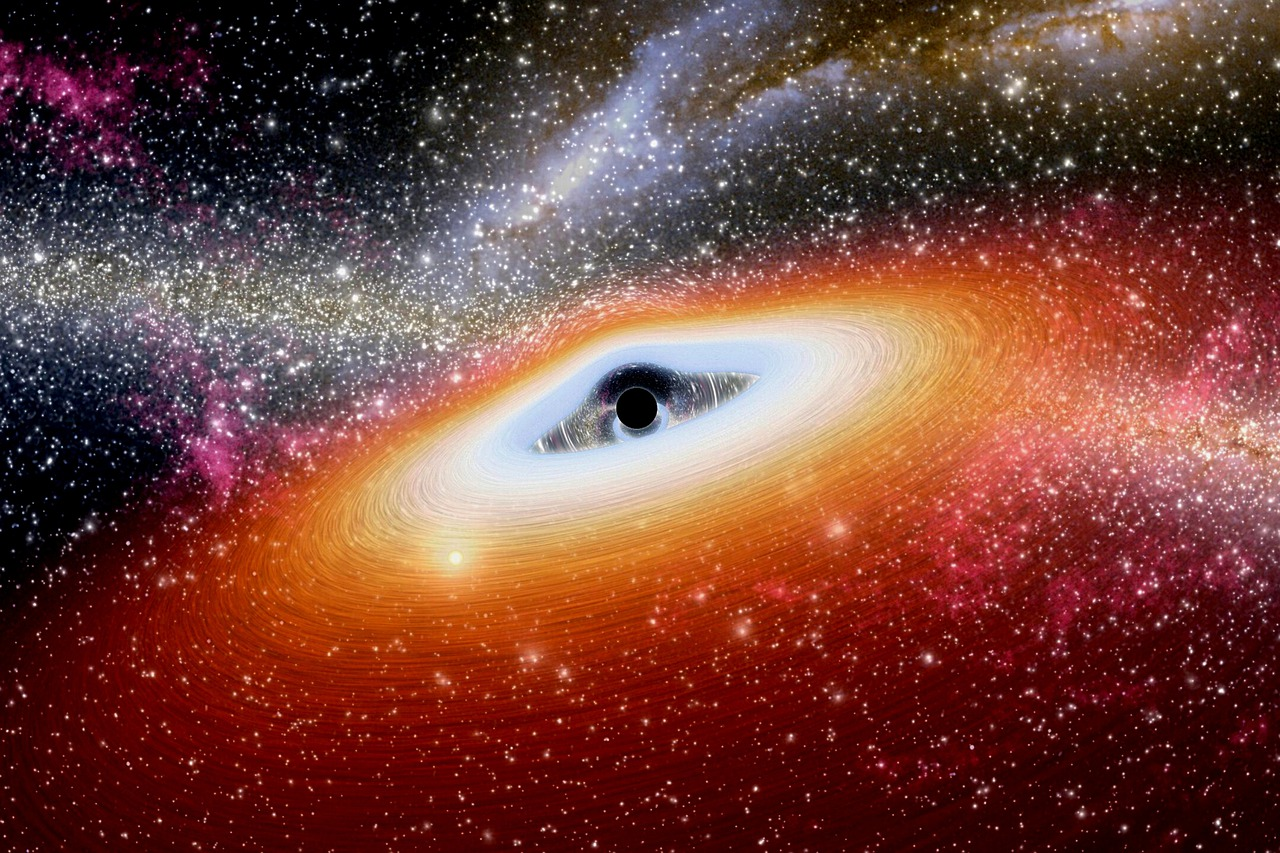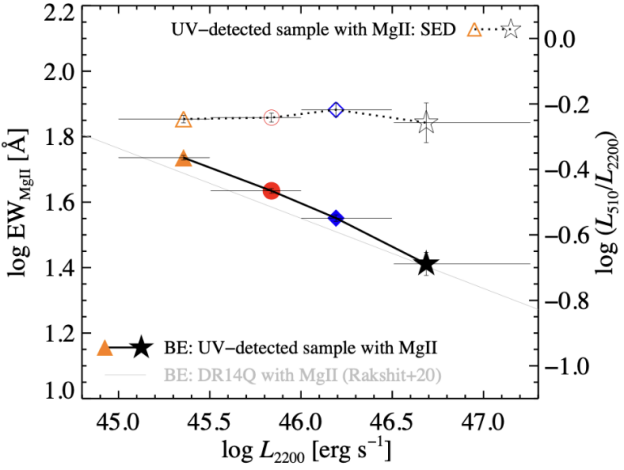USTC Researchers Revolutionize Understanding of Supermassive Black Hole Accretion Radiation in Quasars
Associate Professor CAI Zhenyi and Professor WANG Junxian from the Department of Astronomy at the University of Science and Technology of China (USTC) of the Chinese Academy of Sciences (CAS), through the study of the optical to extreme ultraviolet radiation generated by the accretion of supermassive black holes at the centers of quasars, have discovered that their spectral energy distribution is independent to the intrinsic brightness of quasars, overturning the traditional understanding in this field. Furthermore, their study unveils a substantial departure of the average extreme ultraviolet spectral energy distribution of quasars from the predictions of the classical accretion disk theory. This discovery challenges the classical model and provides substantial support for models that incorporate widespread accretion disk winds. The results were published online on October 5, 2023 in Nature Astronomy.

Fig. 1: The artist illustration of a supermassive black hole accreting gas and shining in the accretion disc (Figure from Pixabay).
Quasars are a class of extremely bright extragalactic objects where massive supermassive black holes at their centers continuously devour the gas in the core regions of their host galaxies. The immense gravitational potential energy is released on the accretion disk formed by the gas, converting into thermal energy and electromagnetic radiation, resulting in an abnormally bright nucleus of the galaxy. Quasars are also referred to as “cosmic behemoths” due to their exceptionally high intrinsic luminosity. According to the standard accretion disk theory, accretion disks produce the well-known “big blue bump” in the spectral energy distribution, with the peak expected in the extreme ultraviolet. The larger the central black hole’s mass, the lower the expected temperature of the accretion disk, and the softer the extreme ultraviolet spectrum. Observations have revealed that more luminous quasars (with larger supermassive black hole masses) exhibit relatively weaker emission lines (explained by softer extreme ultraviolet spectra), known as the famous Baldwin Effect, which appears to be consistent with the classical accretion disk model.
Associate Professor CAI Zhenyi and Professor WANG Junxian’s research focuses directly on the optical-to-ultraviolet spectral energy distribution of large sample quasars. This study utilizes observational data from the ground-based SDSS and space-based GALEX, controlling for the incompleteness of the ultraviolet detection. They found that the average ultraviolet spectral energy distribution of quasars do not depend on their intrinsic brightness, which not only suggests that differences in intrinsic brightness cannot explain the Baldwin effect but also challenges the predictions of standard accretion disk theory. At the same time, the researchers propose a possible new physical origin for the Baldwin effect: more luminous quasars have weaker accretion disk temperature fluctuations, thus unable to launch more emission line clouds.

Fig. 2: The ultraviolet spectral energy distribution slope of quasars (right axis, hollow data points) is independent of intrinsic brightness, which cannot explain the Baldwin effect (left axis, solid data points).
In addition, the study corrects for the effects of intergalactic medium absorption and finds that the average extreme ultraviolet spectrum of quasars is softer than all previous research results. This discrepancy poses a significant challenge to the standard accretion disk model but aligns well with predictions from the model involving an accretion disk wind, suggesting the prevalence of disk winds in quasars.

Fig. 3: Average intrinsic optical-to-ultraviolet spectral energy distribution of quasars (red data points), significantly softer than the standard accretion disk predictions (left panel), but consistent with disk wind model predictions (right panel).
The results of this study have broad implications for a deeper understanding of various aspects of supermassive black hole accretion physics, black hole mass growth, cosmic reionization, the origin of broad-line regions, extreme ultraviolet dust extinction, and more. In the future, satellite projects with ultraviolet detection capabilities, such as the Chinese Space Station Telescope (CSST, http://nao.cas.cn/csst/), will greatly enhance our understanding of the physical properties of quasars and similar celestial objects.

